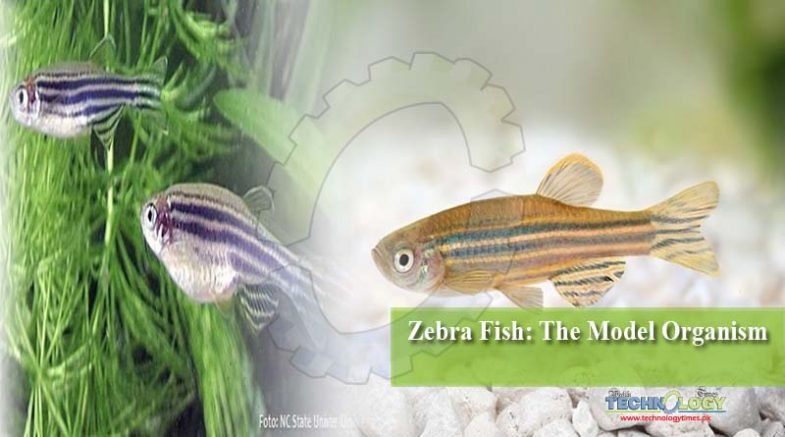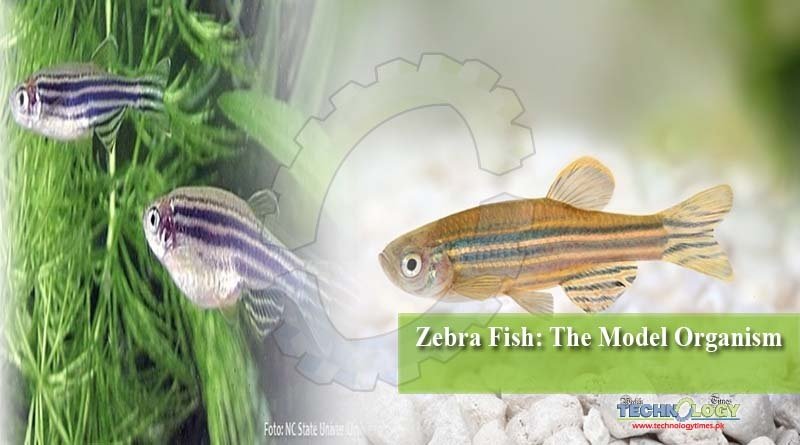Zebra fish usually located in slow-moving water such as rivers, canals, ditches, pools, along with rice fields and standing waters.
 Origin and Classification
Origin and Classification
The zebrafish, Danio rerio, is a tropical fish indigenous to southeast Asia and Himalayan regions like Pakistan, Myanmar, Nepal, and India. Zebrafish belong to the:
Order – Cypriniformes
Family – Cyprinidae
Genus – Danio
In their normal condition, Its feed on mosquito larvae and insects. Their breeding period is supposed to be between April and August with a large number of egg-laying. It become gradually significant to scientific research. It has many traits that make it a standard laboratory animal to study human genetics and disease.
Some key facts about zebra fish
- Zebra fish is one of that fish that has been sent to space.
- For genetic and developmental studies it is most commonly used standard model organisms.
- The body length is 6.4 cm. But in captivity, it hardly goes over a length of 4 cm.
- They are omnivorous and can eat anything smaller than them.
- Their embryos can regenerate their brain.
- They can survive in a wide variety of different atmospheres.
- They can be maintained together in large numbers and can be easily raised.
- Their average lifespan is 3.5 years and can be live up to 5.5 years.
- They display a slow aging process.
- Similar main organs and tissues like humans.
- The breakdown of hours of daylight stimulates mating in it
Sex Classification
The larval stage of zebra fish is transparent and as it becomes adult, it develops stripes along the body length and looks blue in color. Visually all are may appear similar, but there are some technical dissimilarities between males and females. Normally, females with large number of eggs inside have the larger bellies than males, this is most distinctive point to differentiate between males and females. But problems in sex identification occur while females are not carrying large number of eggs or when males are heavily fed and have distended bellies.
When distinctions in belly size are not clear, then color of body and fin are the characteristic points to distinguish between the two sexes. Males are cylindrical in shapes and have pink or yellow tinge while females are less pinkish in color than males. Nutrition, age, and strain of zebra fish may affect the color of body and fins, so it is not suitable to make simple clarification on the basis of the color changes between males and females. The ideal way to differentiate between male and female zebra fish is by an expert zebra fish user.
Water Quality
Zebra fish can survive a wide variety of water quality, low requirements for survival water quality. Chlorine is usually used for water sanitization, but it can be poisonous to them. That’s why tap water should be kept for 24 hr to evaporate all chlorine before being used. Reverse osmosis, deionized, or distilled water are used where huge volumes of water are required due to source water contamination.
Temperature
Zebra fish is tropical and freshwater fish, they require moderately warm water but they can survive a wide range of temperature (70°F-90 °F). The optimum temperature for growth is 83°F. Z They can survive everywhere in this range of temperature, therefore temperature is possibly the most commonly constant environmental parameter in research and farming. The rearing temperature that deviates from optimum temperature can affect the body functions and performance.
pH
To promote good health, optimum range of pH for zebra fish should be within 7-8. Stable water pH is more important for normal body growth. Many facilities try to keep the water pH stable. Any concentration of ammonia can cause health effects, but lower pH shifts the ammonia concentration to the less-lethal compound. Therefore, stable lower water pH is preferable for zebra fish growth. Any lethal compound must be removed from water upon detection to prevent any contamination.
Salinity
A measure of the total concentration of all dissolved ions in water is termed as salinity or conductivity. Salinity can affect the growth, reproduction and mortality rate of zebra fish. Generally the range of salinity for zebra fish is 0.25-0.75 ppt.
Nutrition
Exact nutritional requirements of zebra fish are not known, they are similar to other omnivorous fish like carp, shiners, goldfish, etc. The nutritional requirement and feeding strategies are different at different stages of life. For example, juvenile zebra fish require high dietary protein level as compared to the mature zebra fish. Lipids are very essential part of zebra fish diet at every stage of life as a source of energy and essential fatty acids for normal development. Its have some enzymes, which are required to convert carbohydrates into energy.
Dietary vitamins, minerals and organic compounds are required in a very trace amount by fish. These compounds may be absorbed from adjacent water by gills therefore; their trace amount is required in feed. The live diet of zebra fish includes zooplankton species like Rotifers, Artemia and Paramecium while prepared or artificial diet is preferred over live diet and formulated using organic ingredients to reduce the feed cost. Additionally prepared or artificial diet can be sterilized and reduced microbial contamination. However, exact nutritional requirements of zebra fish are not known therefore it is not recommended to completely replace the live diet with prepared diet.
Genome
In 2013 the comprehensive genome sequence of zebra fish was published. Its genome is 1,505,581,940 base pairs. in length and contains 26,247 protein-coding genes. Zebra fish have 25 chromosomes, 1.5 x 10 billion base pairs and 26,247 protein-coding genes in their genome sequence while the mammalian genome has about 3 x 10 billion base pairs. Zebra fish is a small organism in comparison to many mammals.
Why use zebra fish in research??
- Small and healthy.
- Lay a large number of eggs all over the year.
- Develop a very fast, developing rate in a day.
- Reach sexual maturity within 3 to 4 months.
- Cost-effective as a lab animal than rats.
- On weekly basis they produce a large number of offspring.
- Eggs of Zebra fish developed external to the female body, therefore it is standard organism for early developmental study.
- Its embryos are transparent, therefore we can easily see the development of internal organs with a light microscope.
- Its embryos are very sensitive to environmental toxins; therefore, they are suitable for acute and chronic toxicity tests.
- Repair their heart muscle. Researchers are working to find the mechanism involved in the repairing process of heart muscles to study if this will help to develop mechanism of repairing the human heart.
According to the Organization for Economic Cooperation and Development (OECD) and the International Organization for Standardization (ISO) listed it as an experimental standard model organism.
